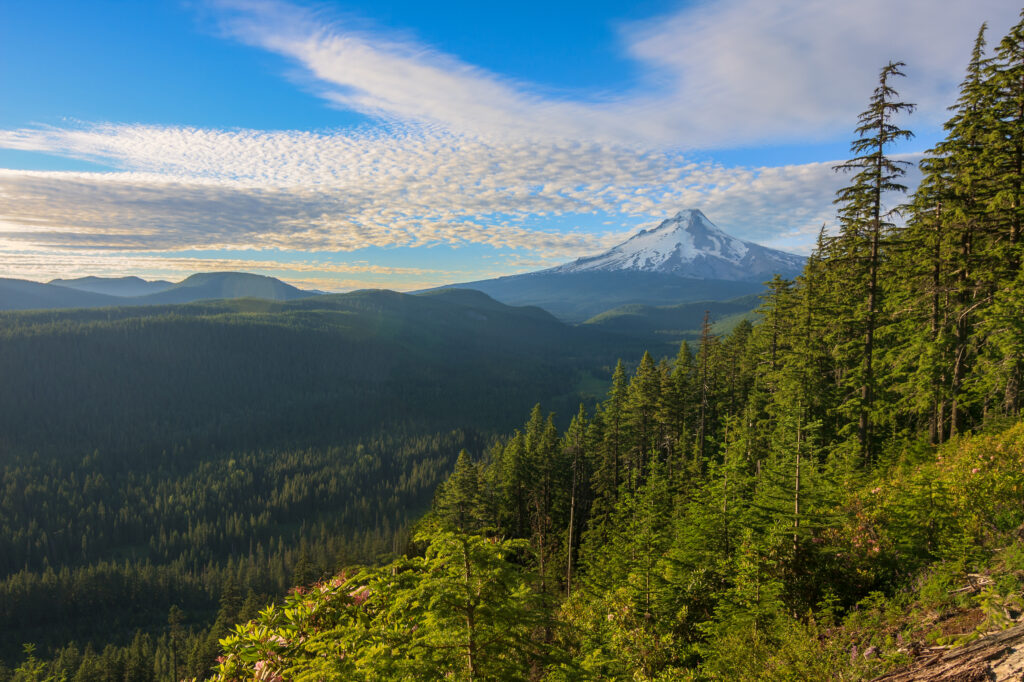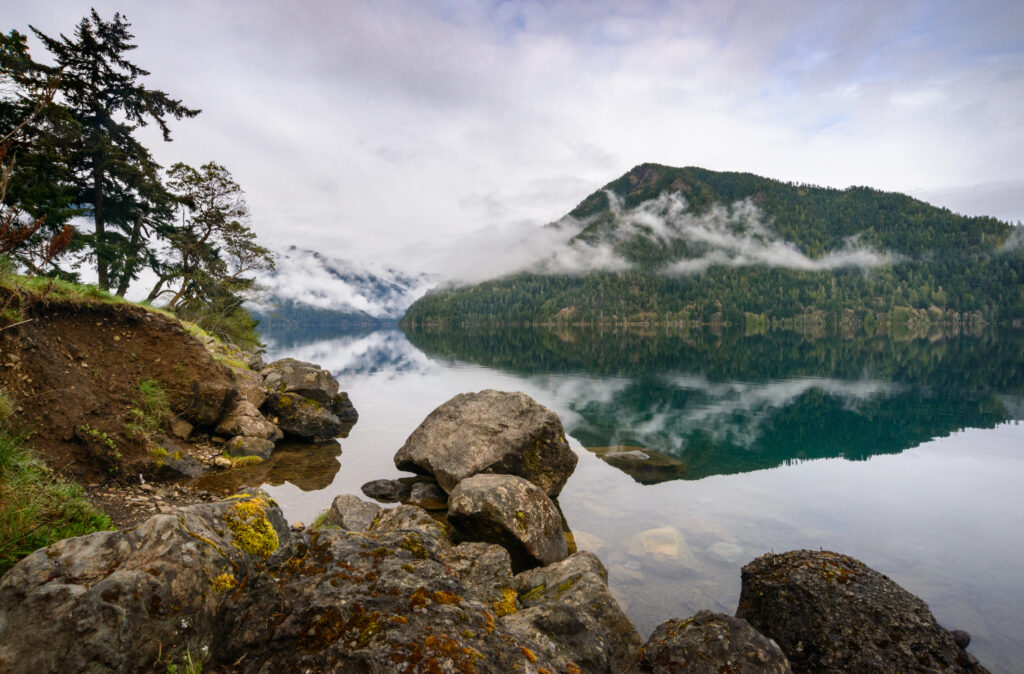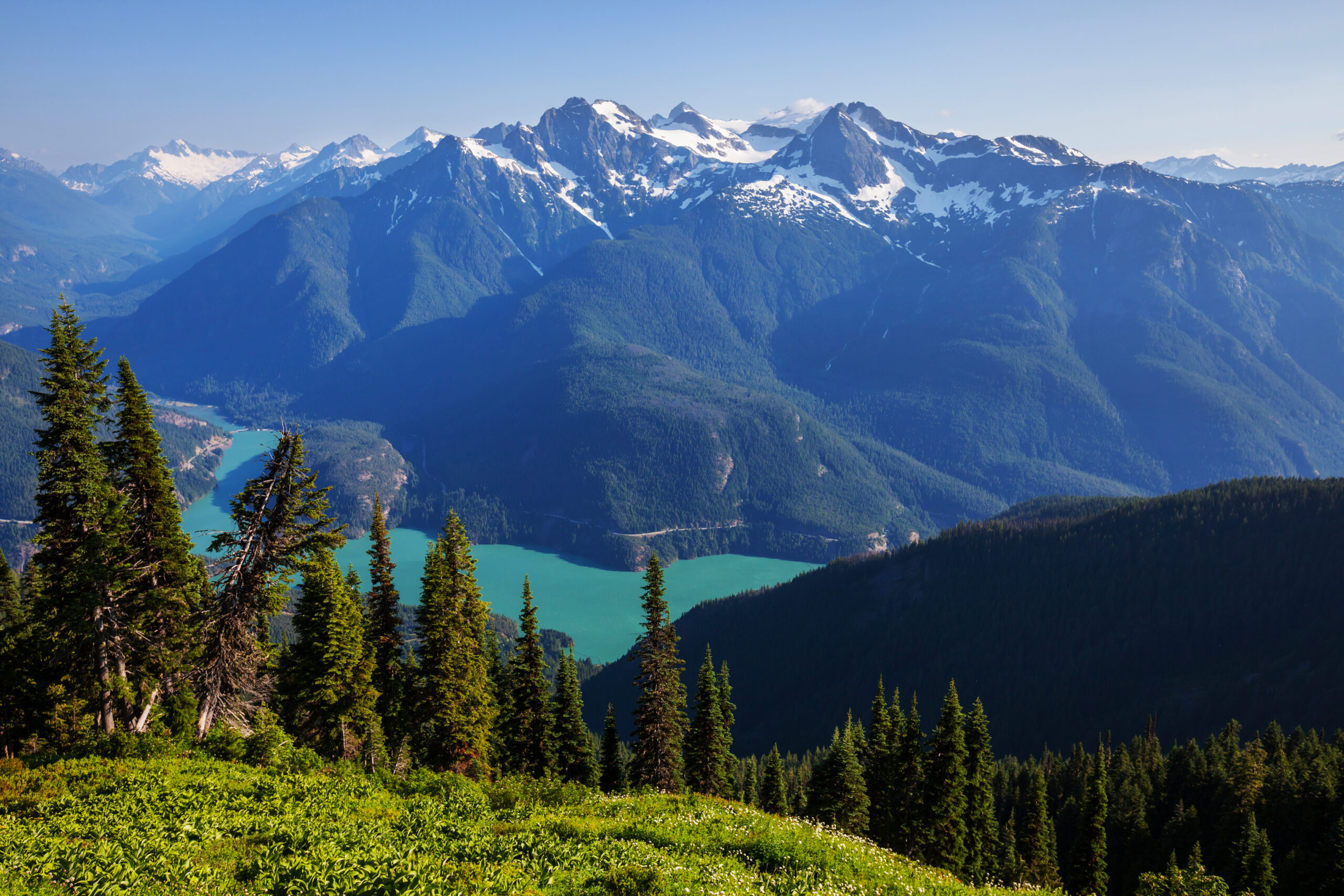Washington State is one of the most mystical places in the United States, with its towering mountains, lush forests, and abundant wildlife.
It’s no surprise that the Pacific Northwest is home to a number of mysterious creatures and phenomena, including one of the most elusive creatures of all— Big Foot, or Sasquatch.
The outdoors enthusiast, cryptozoologist, or even just the curious tourist can all be on the lookout for this elusive creature.
While sightings of Big Foot in Washington State can sometimes be sketchy, there are some areas that are more likely than others to produce a sighting.
Let’s take a look.
Cascades

The Cascade Mountains are a great place to start your search for Sasquatch.
This region of Washington is a mountainous area located in the western part of the state.
This mountain range runs from the Canadian border all the way down to Oregon, and its forests are believed to be a prime habitat for the creature.
Its terrain is rugged and remote, making it an ideal area for avoiding humans.
It is home to a range of diverse landscapes, including forests, valleys, and alpine meadows.
The region is known for its beautiful natural scenery, including waterfalls, rivers, and lakes.
The Cascades are home to several national forests and national parks, including Mount Rainier National Park and North Cascades National Park.
The climate in the Cascades region is characterized by cool, wet winters and dry, warm summers.
The region receives a significant amount of snowfall in the winter months, making it a popular destination for skiing and snowboarding.
The Cascades region is home to a number of small towns and communities, including Leavenworth, a popular tourist destination known for its Bavarian-themed architecture and Oktoberfest celebrations.
The region is also home to a number of Native American reservations, including the Yakama Nation and the Nisqually Indian Tribe.
In fact, the area is so remote that it’s been said that not even park rangers venture into it.
The Skagit River Valley
The Skagit River Valley is a region located in the northwest corner of Washington state, in the United States, and it’s a great place to search for Big Foot.
It is known for its beautiful and diverse landscape, which includes dense forests, rolling hills, and fertile farmland.
The region is also home to a number of rivers, streams, and lakes, including the Skagit River, which is the largest river in the region and a major source of irrigation for the area’s agricultural industries.
The Skagit River Valley is home to a number of small towns and communities, including Mount Vernon, Concrete, and Sedro-Woolley, which are located along the Skagit River.
The region is also home to a number of parks and outdoor recreation areas, including North Cascades National Park and the Skagit Wild and Scenic River, which offer opportunities for hiking, camping, fishing, and Bigfoot viewing.
In addition to its natural beauty, the Skagit River Valley has a rich history and culture.
It was originally inhabited by Native American tribes, who used the region’s natural resources for hunting, fishing, and gathering.
The region was later settled by European immigrants in the late 1800s, who established farms and ranches in the area.
This area is home to many different species of wildlife. It is also home to some of the oldest trees in the world.
The valley is remote and rugged, making it an ideal habitat for the creature to hide in.
The Olympic Peninsula

The Olympic Peninsula is one of the most remote areas in Washington State.
It is a great place to search for Big Foot, as there are many large areas of old-growth forest.
The Olympic Peninsula is a large landmass located in the northwest corner of the state of Washington in the United States.
It is bordered by the Pacific Ocean to the west, the Strait of Juan de Fuca to the north, and Puget Sound to the east.
The Olympic Peninsula is home to a diverse range of landscapes, including forests, mountains, and coastline.
One of the main attractions of the Olympic Peninsula is Olympic National Park, which covers most of the peninsula.
The park is home to a wide variety of plant and animal life, including the Olympic marmot, elk, black bear, and the endangered northern spotted owl, making it an ideal habitat for Bigfoot.
Within the park, there are several distinct ecosystems, including the temperate rainforest, alpine meadows, and the rugged Pacific coastline.
The Olympic Peninsula is also home to a number of small towns and communities, many of which are located along the coast.
The Olympic Peninsula has a mild, maritime climate, with cool, wet winters and dry, mild summers.
The region is known for its high levels of rainfall, especially in the rainforest areas of the park.
The area is also known for its frequent storms and fog, which can make it difficult for humans to search for the creature.
Despite the wet weather, the Olympic Peninsula is a popular destination for outdoor enthusiasts, who come to enjoy activities such as hiking, fishing, camping, and searching for Sasquatch.
The Columbia River Gorge

The Columbia River Gorge is home to a large number of species of wildlife, including Sasquatch.
The Columbia River Gorge is a natural area located in the Pacific Northwest region of the United States.
It is a canyon that was created by the Columbia River as it cuts through the Cascade Range of mountains.
The gorge stretches for approximately 80 miles (130 kilometers) from the western end of the Cascades in Washington state to the eastern end of the range in Oregon.
The Columbia River Gorge is known for its spectacular scenery and is a popular destination for outdoor enthusiasts.
The area is home to a wide variety of plant and animal life, including several species of fish, birds, and mammals.
The gorge is also home to a number of waterfalls, including the famous Multnomah Falls, which is the second tallest year-round waterfall in the United States.
The Columbia River Gorge is a popular spot for activities such as hiking, rock climbing, and white-water rafting.
In addition to its natural beauty, the area is also home to some of the oldest trees in the world, making it an ideal habitat for Bigfoot viewing.
The Blue Mountains
The Blue Mountains of southeastern Washington are a great place to search for Sasquatch.
They are part of the larger Cascade Range and are located to the east of the Cascades.
The range runs in a north-south direction and is approximately 150 miles (240 kilometers) long.
The highest peak in the Blue Mountains is Signal Peak, which reaches an elevation of 8,262 feet (2,517 meters).
The Blue Mountains are primarily composed of volcanic rock and are home to a variety of plant and animal life.
The range is covered in coniferous forests, including stands of Douglas fir, ponderosa pine, and lodgepole pine, making it the ideal habitat for Bigfoot.
The Blue Mountains are also home to a variety of wildlife, including elk, mule deer, bighorn sheep, and various species of birds and small mammals.
The Blue Mountains are a popular destination for outdoor recreation, with many trails for hiking, mountain biking, and horseback riding.
The region is also known for its abundant hunting and fishing opportunities.
The Blue Mountains are located in a semi-arid climate, with hot summers and cold winters.
This type of weather has been reported to favor Bigfoot, making the Blue Mountains an ideal place to search.
Final Thoughts
These are just a few of the many places in Washington State where you can search for Sasquatch.
While sightings are rare and often sketchy, the possibility of encountering this creature still exists.
While exploring the area, be sure to keep an eye out for any strange activity or sightings.
If you do happen to see something strange, be sure to document it properly.
Who knows, you may be the one to finally prove the existence of Sasquatch!
Until then, the search continues.

